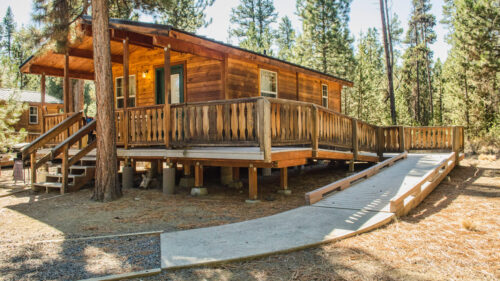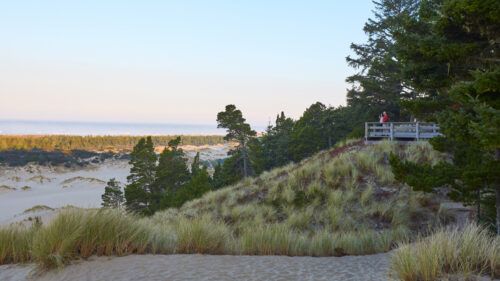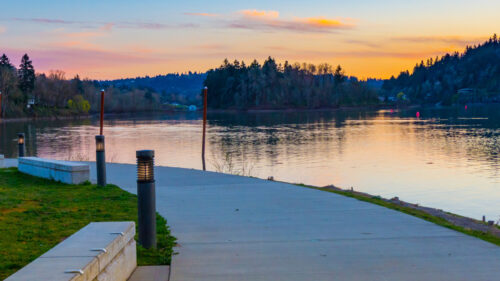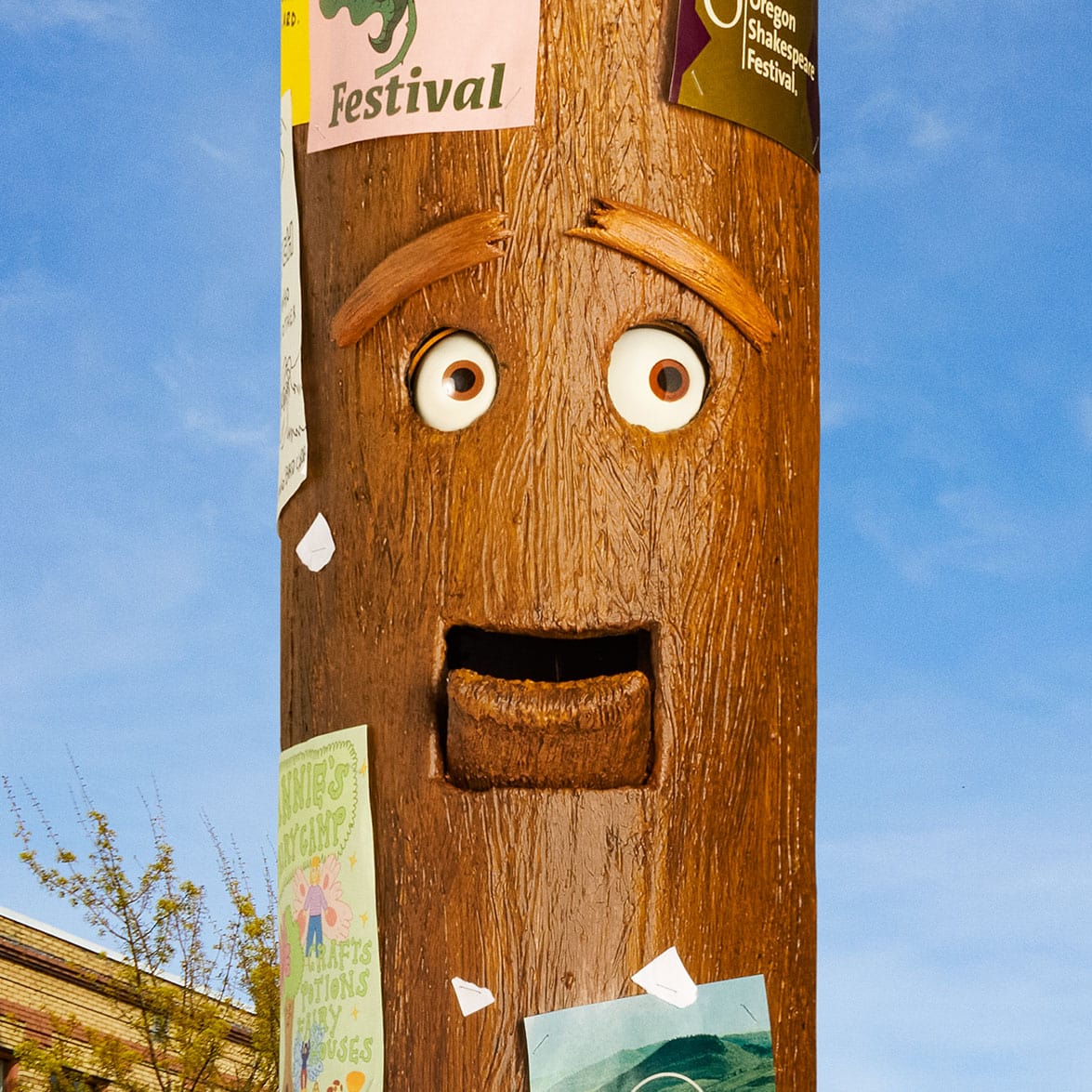Oregon’s Columbia River Gorge is world-famous for its waterfalls — and getting there can be half the fun. Most Gorge waterfalls are within a 40-mile drive of Portland on the Historic Columbia River Highway Scenic Byway, and many are partly or fully accessible to travelers with various mobilities. Plus, wheelchair-accessible shuttles such as the Sasquatch Shuttle and the Waterfall Trolley make it easy to experience the corridor truly car-free during the summer months. Here’s how to take an accessible waterfall trip everyone can enjoy.
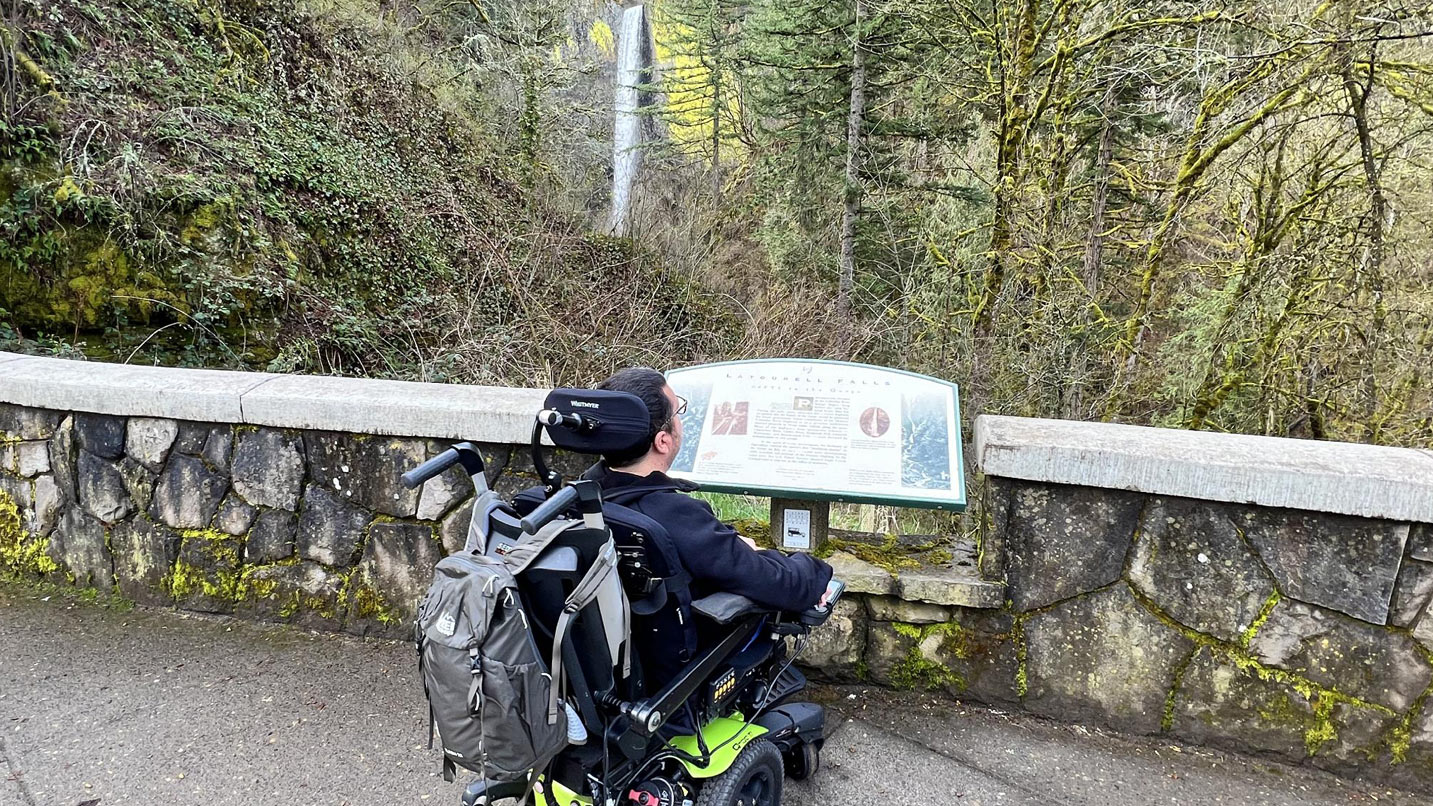
Cruise the Columbia River Highway
Built between 1913 and 1922, the Historic Columbia River Highway was the first scenic highway in the country. Today the 70-mile route is a National Historic Landmark. Spend the day experiencing its stupendous viewpoints, scenic bends, and atmospheric walls and bridges made from local charcoal-gray basalt, and you’ll see why it’s earned the nickname “King of Roads.”
For the full experience, begin in Corbett, where you can hop on a Waterfall Trolley or drive your own personal vehicle on the highway. Your first stop? Vista House at Crown Point, which presides over a jaw-dropping view of the Gorge. This cupola-like structure was built in 1918 to create an observatory “from which the view both up and down the Columbia could be viewed in silent communion with the infinite.” It was also intended to provide restrooms along the highway, making Vista House one of the most scenic rest areas imaginable.
It’s a great place to contemplate the amazing power of the Missoula Floods, which carved steep basalt canyons into the landscape. A custom-built lift in the Vista House offers stepless entry to the interior. Check out the rotunda, clad in Alaskan marble, and visit the historic photo gallery and gift shop.
From there continue east on the Historic Highway for 2.5 miles to reach Latourell Falls. A spacious paved viewpoint of the 224-foot falls, including interpretive signage, is fully accessible to wheelchairs and strollers. Unpaved hiking trails take walkers closer to the falls, while accessible benches and picnic tables at the viewpoint invite visitors to linger.
Heading east, the next waterfall you’ll come across — quite literally — is Shepperd’s Dell Falls. There’s no parking lot or official viewing area for this cascade, but drivers will pass over it on a stone bridge built in 1914. Pro tip: The best views can often be seen out the rear window of the car while traveling east, another benefit of riding a shuttle. One mile farther is the ethereal Bridal Veil Falls. For the best look, the 1-mile Bridal Veil Falls Trail gets you up close to the cascade. The first three-quarters of a mile is paved but eroded, and the last quarter-mile is unpaved and includes stairs and a couple of wooden bridges. You can also travel the fully paved, half-mile Overlook Trail, which leads from the parking lot to sweeping overlooks of the river.
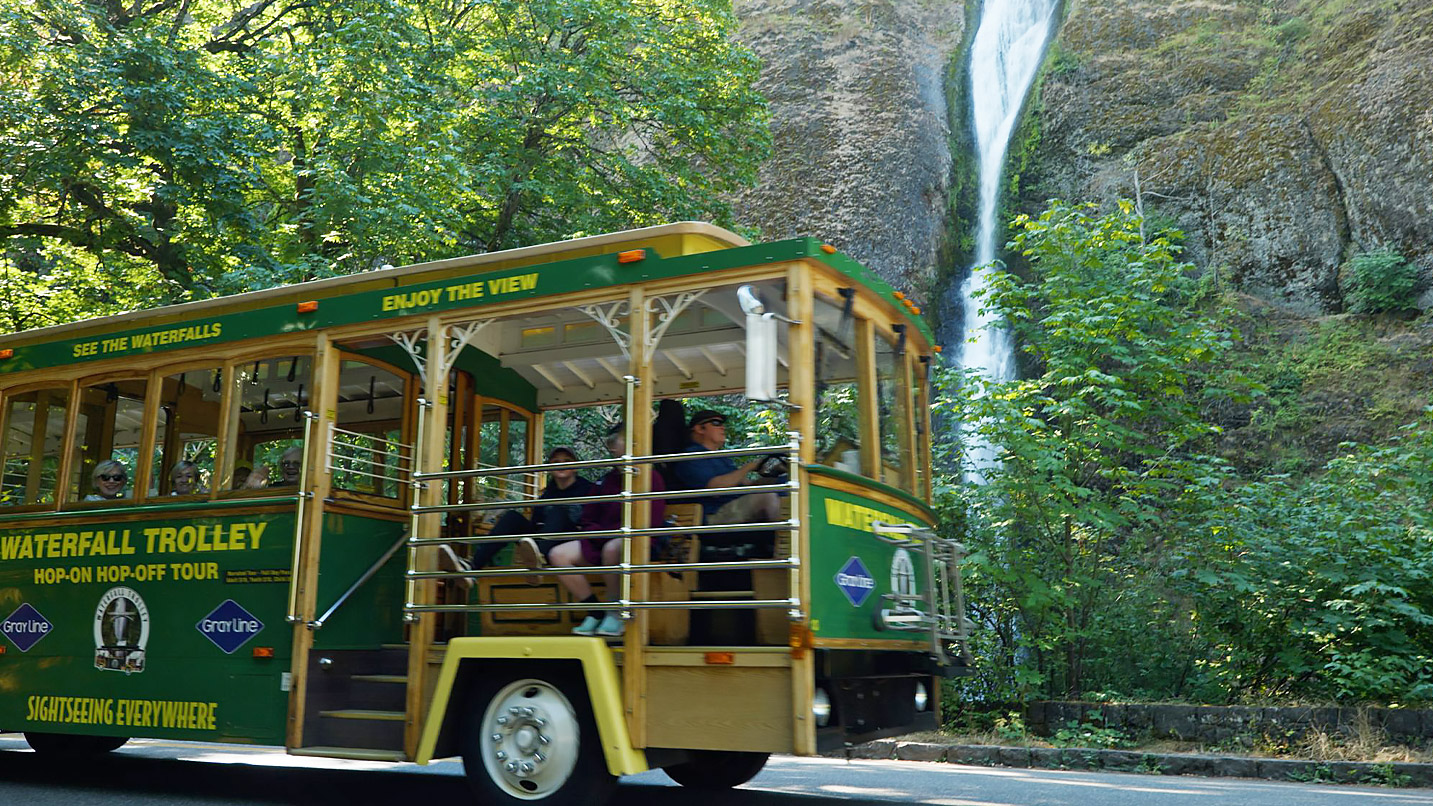
Experience Mighty Multnomah Falls
The crown jewel of the waterfall corridor is 4 miles to the east. The Gorge’s most famous waterfall, Multnomah Falls’ elegant, two-tiered cascade sees more than 2 million visitors a year. That makes for a busy site, especially on summer weekends. If you’d like to avoid the crowds, plan your visit for a weekday, in the early morning or during the cool season.
Some accessible parking spaces are available right in front of Multnomah Falls Lodge, which you can get to from the Historic Highway. If those are full, you’ll need to circle back to I-84 and park in the main lot, then head to the Visitor Center on a short, paved path. A somewhat steep, paved ramp leads to the main viewing area for an up-close-and-personal view of this iconic 620-foot falls. Fed by underground springs, Multnomah Falls is the second-tallest year-round waterfall in the United States. The Multnomah Creek Bridge, the arched bridge that spans the lower falls, was built in 1914.
During the busy summer season, you’ll also need to buy a timed entry pass for the parking lot. Want to avoid all the parking hassle? Take a shuttle like Sasquatch Shuttle or the Waterfall Trolley, or book a guided tour. Many companies offer accessible accommodations, and you can also ride the Columbia Gorge Express for transportation to and from Portland, and throughout the area.
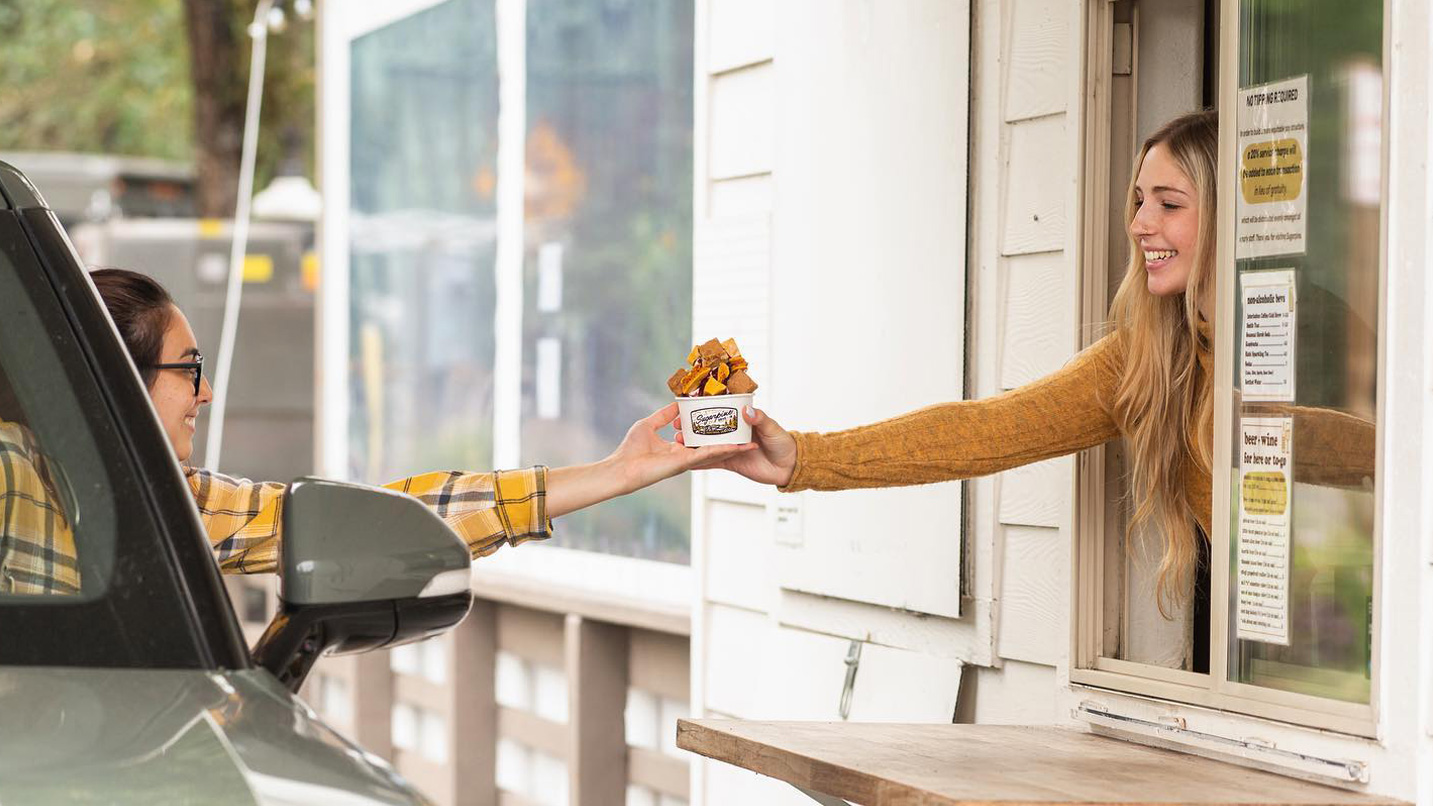
Fuel Up with Lunch Along the Corridor
If you’ve taken a personal vehicle, this itinerary brings you close to not one but two great drive-through restaurants: Sugarpine Drive-In in Troutdale, which is famous for its over-the-top ice cream concoctions, and the East Wind Drive-In in Cascade Locks, which dishes up classic burgers and milkshakes.
With an on-site gift shop and restaurant, Multnomah Falls is the best place to grab a bite if you’re traveling car-free. Order a latte and a pastry at the espresso stand, or take the elevator to the upper level of the Multnomah Falls Lodge to refuel with a full dining experience, including the famous hazelnut-crusted French toast.
